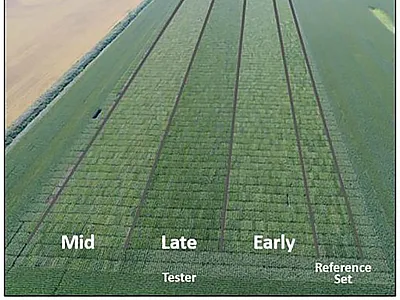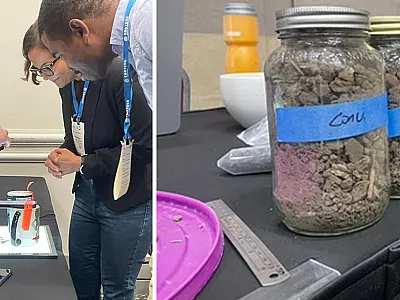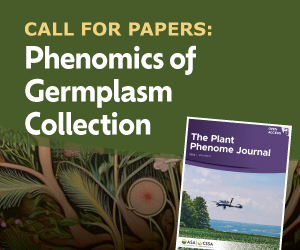Weaponizing wheat’s defenses
Key to developing resistance may lie in helping wheat modify its response to Fusarium
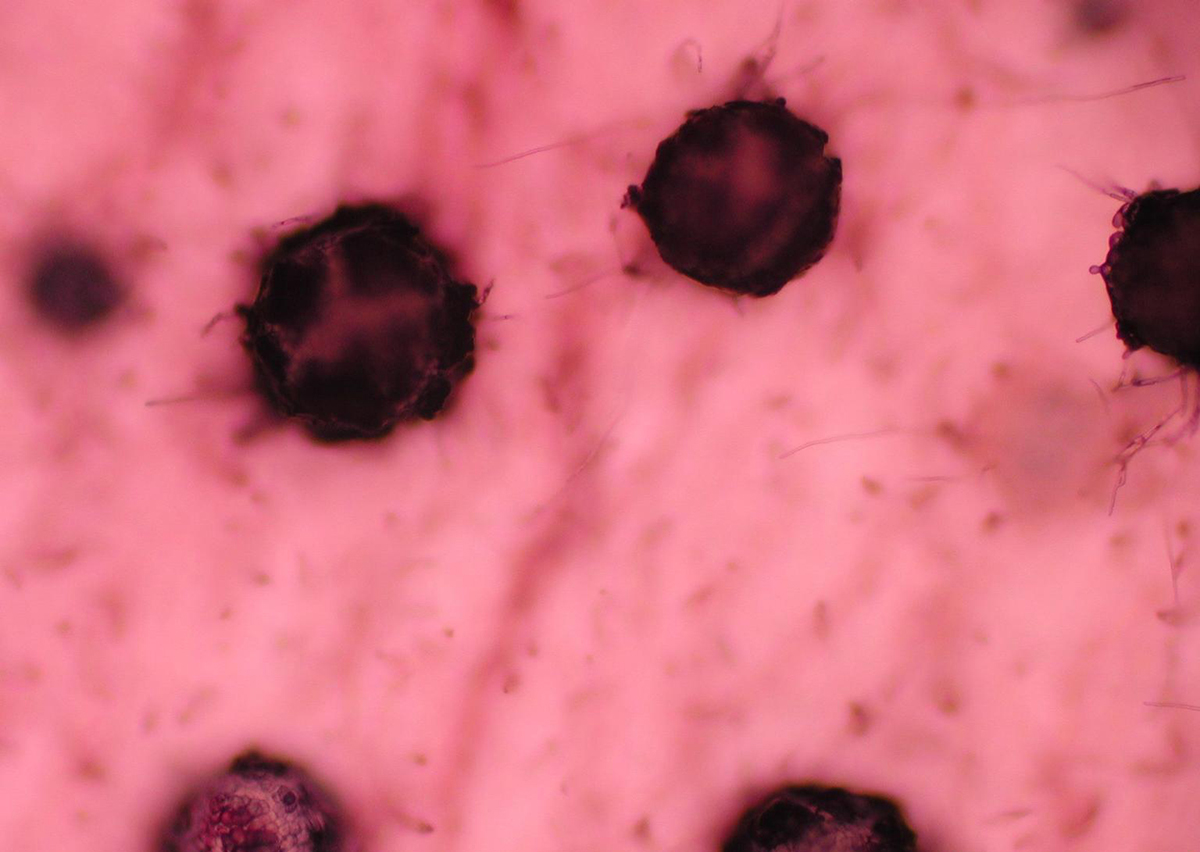
Plant breeders who study the fungal disease of wheat, Fusarium head blight (FHB), often screen wheat for resistance to FHB inside Fusarium “nurseries”: warm, humid greenhouses that foster growth of the FHB pathogen, Fusarium graminearum, and the spread of FHB. But the perfect conditions for FHB aren’t limited to breeding experiments these days; wet and warm weather is increasingly common in the outside world, too. As a result, FHB has grown over the past 20 years into one of the world’s most devastating diseases of wheat and other small grains, such as barley, oats, and triticale.
One reason FHB is so damaging is that it presents farmers with not one, but two, challenges. First, serious outbreaks of FHB can cause yields to plummet. But the bigger problem is the loss of grain quality—and, thus, market value—due to a mycotoxin produced by F. graminearum: deoxynivalenol (DON), also known as vomitoxin. Meanwhile, only a handful of moderately resistant wheat cultivars are available today, forcing farmers to rely on fungicides or other practices, such as crop rotation, to combat FHB.
In this issue, read about how plant breeders are fighting back against FHB through a combination of advanced technology and genetic studies and by searching for novel sources of FHB resistance.
The growing threat of Fusarium head blight (FHB) has researchers around the world scouring wheat for traits that can help it fight the devastating fungal disease. But amid this global search for what makes wheat resistant to FHB, a team at the University of Guelph also asked the opposing question: What makes wheat susceptible?
The surprising answer, published in 2023 in Crop Science, is that certain defensive moves made by wheat against the FHB pathogen, Fusarium graminearum, can also be wheat’s downfall. The article won the CSSA Outstanding Paper Award in Genomics, Molecular Genetics and Biotechnology in 2024.
Locked in defense mode
In the article, the team describes how a highly FHB-resistant spring wheat, called AAC Tenacious, modified its defenses against F.graminearum when the pathogen transitioned from biotrophy (feeding on live cells) to necrotrophy (feeding on dead ones). In contrast, a highly susceptible winter wheat, Wilkin, “remained locked in a defense mode better suited for biotrophs,” says the study’s lead author, Mina Kaviani.
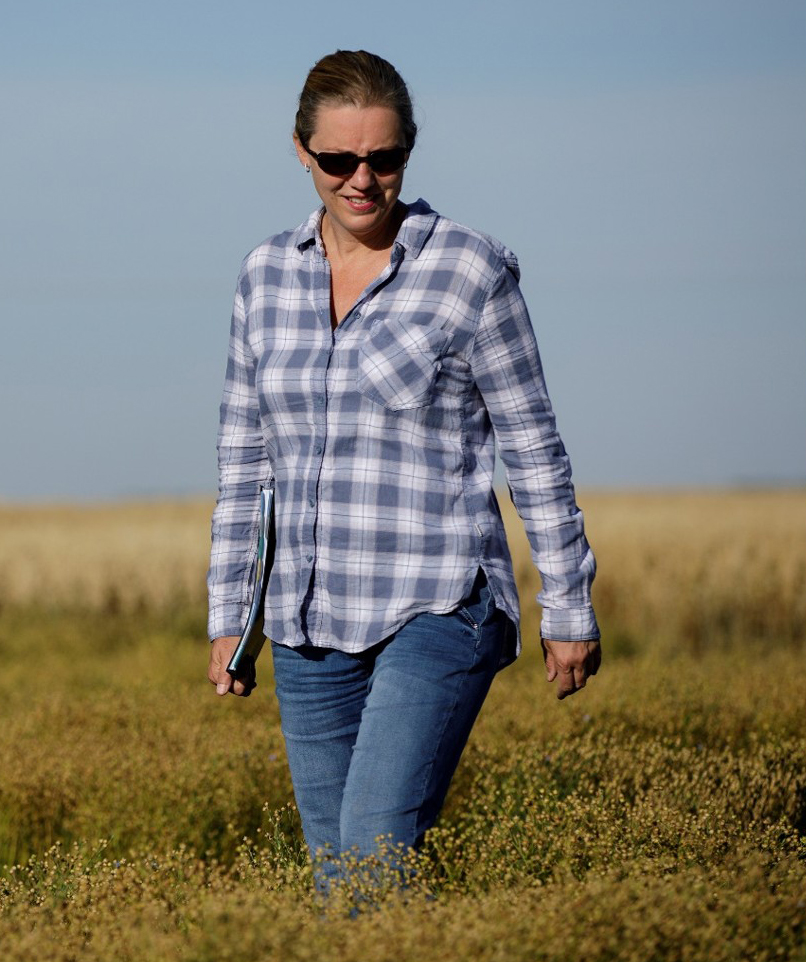
Wilkin’s inability to pivot—like AAC Tenacious can—when F. graminearum switches to necrotrophy quickly becomes a liability. In fact, the study suggests F. graminearum ends up hijacking Wilkin’s defenses for its own purposes. “[Those defenses] actually helps the pathogen to grow,” says Kaviani’s collaborator, Helen Booker, a CSSA and ASA member and University of Guelph wheat breeder. “That was a major outcome of this study.”
The unexpected finding emerged from a comparison of the “transcriptomes” in AAC Tenacious and Wilkin—or an analysis of all the genes that were up- and downregulated when the two cultivars were infected with F.graminearum. Examining both a highly resistant cultivar, AAC Tenacious, and a highly susceptible one, Wilkin, was central to the design, Kaviani says. “I want to point out that we looked at the susceptible response very closely, which has been the underestimated side of plant–pathogen interactions in many [transcriptomic] studies.”
Another critical feature was the time point chosen for the analysis: about 48 hours post-infection, when F. graminearum changes from biotrophic to necrotrophic growth. This transition was targeted, Kaviani explains, because it’s also when F.graminearum begins producing the mycotoxin, deoxynivalenol (DON). For wheat growers trying to market their grain, DON contamination is frequently an issue. But inside wheat plants, DON also damages the wheat head and promotes the spread of FHB.
This has led some researchers to suggest that a key defense in wheat against FHB is the plant’s conversion of DON to a “non-toxic” form, DON-3-glucoside (DON3G). However, the University of Guelph team points out that both resistant and susceptible wheat varieties are known to convert DON to DON3G, suggesting that true resistance to FHBlies elsewhere.
Key to resistance: Shutting down programmed cell death
The researchers now think they’ve identified a source of true resistance—one that explains both AAC Tenacious’ ability to fight F.graminearum and Wilkin’s vulnerability to it. It involves a cellular response, called programmed cell death (PCD), which plants commonly use to defend against biotrophic pathogens. By killing off the live cells these pathogens feed on and starving them of nutrients, PCD helps limit the growth of biotrophic invaders. However, when F.graminearum switches from biotrophy to necrotrophy in wheat at 48 hours, PCD begins to aid the pathogen by producing more dead cells for it to feast on.
AAC Tenacious, the team showed, prevents this outcome by suppressing PCD once F.graminearum changes to a necrotrophic growth mode. But Wilkin keeps on with PCD, explaining the cultivar’s susceptibility. “The genes involved in promoting PCD were highly upregulated in Wilkin,” Kaviani says. “This directed the plant’s defenses toward widespread PCD that actually benefited the necrotrophic growth of the pathogen and allowed FHB to spread more easily.”
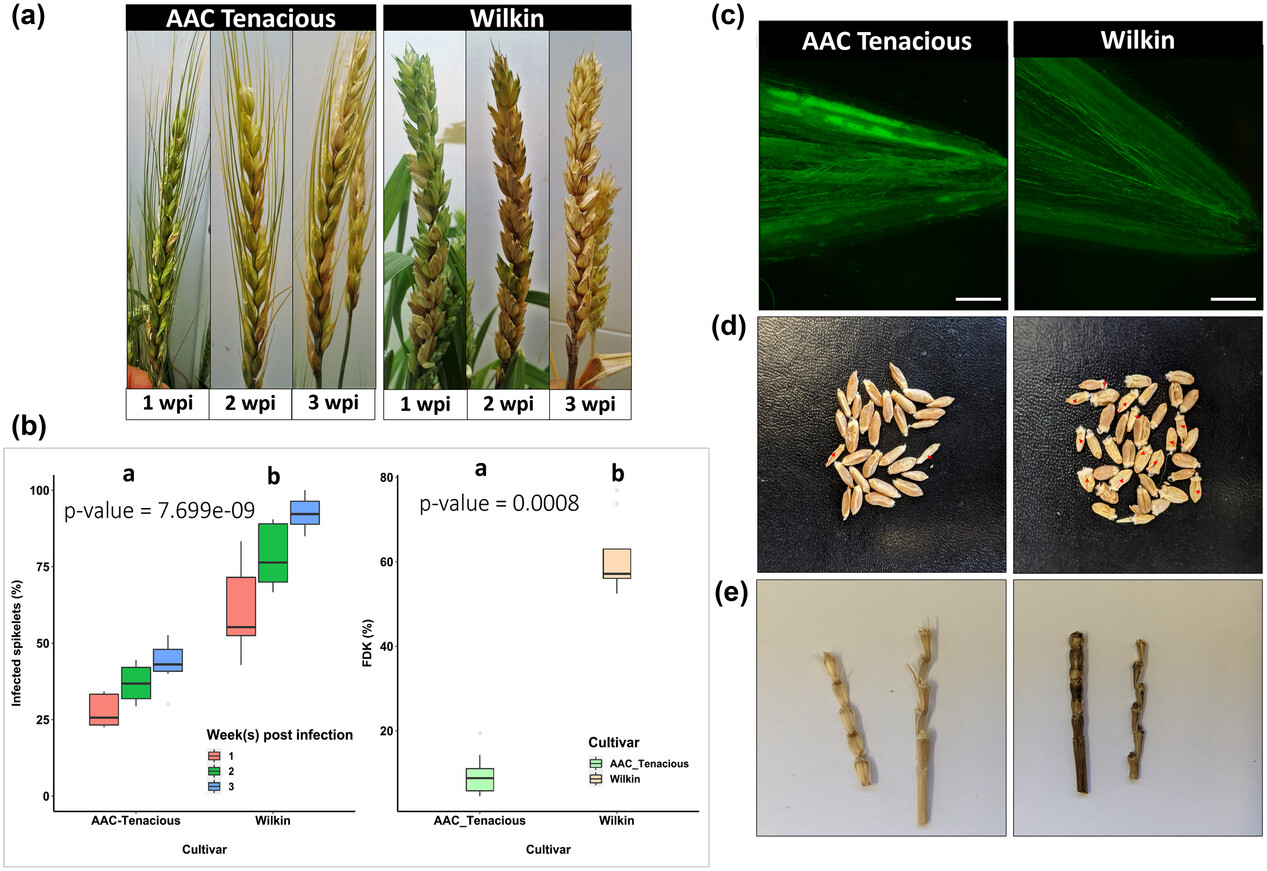
In short, wheat’s ability to resist FHB doesn’t lie just in its ability upregulate key defenses in response to infection, but also to shut down certain defenses—specifically, PCD—once they’re no longer productive. The finding provides an important target for plants breeders as they continue the demanding work of producing FHB-resistant cultivars for farmers. The rampant PCD that’s triggered by F.graminearum infection, the University of Guelph team says, must be controlled.
Dig deeper
Seifi, S., Kaviani, M.,Navabi, A., Lee, E. A., & Booker, H. M. (2023).Underlying mechanisms of FHB susceptibility and resistance in wheat: Insights from a transcriptome-based analysis. Crop Science, 63, 2347–2370. https://doi.org/10.1002/csc2.20974
Check out all the other Fusarium head blight articles in this issue of CSA News.
Text © . The authors. CC BY-NC-ND 4.0. Except where otherwise noted, images are subject to copyright. Any reuse without express permission from the copyright owner is prohibited.





